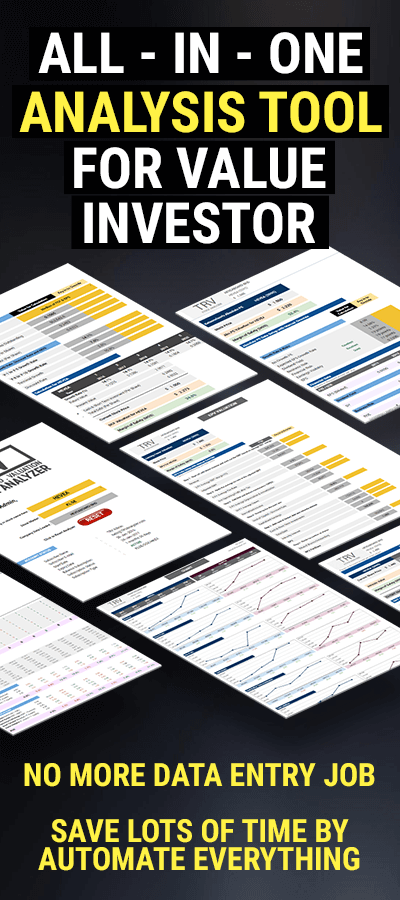Under generally accepted accounting principles (GAAP), the definition of earnings is the change in owner equity plus dividends (if any). Earnings are shown on the company’s income statement, which is nothing more than a measurement of the change between balance sheet items. As legendary value investor Ben Graham wrote in his equally-legendary investment book Security Analysis:
The meaning of any income statement cannot properly be understood except with reference to the balance sheet at the beginning and the end of the period.
Since owner equity is equivalent to assets minus liabilities, earnings can also be thought of as the change in net assets (i.e., change in assets minus change in liabilities). Liabilities are by definition not cash and there are many different non-cash assets (e.g., inventory and accounts receivable). Consequently, earnings often differ markedly from cash flow.
Earnings can be manipulated
There is a lot of room for accounting discretion when dealing with non-cash assets. For example, a retailer that sells $110 worth of clothes on credit has to decide whether to book sales for the full $110 or book a lower number to take into account the likelihood of customer returns. Similarly, a company with work-in-process inventory has some leeway in valuing that inventory — the higher the valuation, the higher the earnings now. If customer merchandise returns come in higher than provisioned for, or inventory is sold for less than its stated value, future period earnings will take a hit.
On the liability side, there is significant discretion in how to book cash outflows – as current period expenses or later period capital investments. The more that cash outflows are capitalized, the higher a company’s earnings will be in the current period and the lower they will be in future periods (since the investments will need to be systematically depreciated, which is an expense).
The bottom line is that unusually high accruals now due to aggressive accounting will maximize current earnings but by necessity will result in lower earnings later (assuming no growth in earnings). The corollary is that unusually low accruals now due to conservative accounting will minimize current earnings but result in higher earnings later.
Cash flow is not perfect either
On the other hand, cash is, well, cash and there is no room for subjectivity (absent fraud). That’s the good news. The bad news is that cash flows can be very lumpy and not indicative of the continuous liabilities they are associated with. For example, if a health club collects a two-year membership fee up front in cash, the cash will all show up in the current year, making the company look more profitable than it really is given that the cash is tied to a service obligation that lasts for two years. The reason GAAP accounting exists is to help match a company’s assets with its liabilities in a more relevant way that demonstrates the true profitability of the company.
Accrual earnings or Cash flow?
So, that background sets up the dilemma. GAAP accrual accounting is more relevant to assessing corporate performance but subject to inaccurate estimation, whereas cash accounting is somewhat less relevant to corporate performance but is much more accurate.
The difference between earnings and cash flow is called “accruals.” The equation is simply:
Accruals = Earnings – Cash Flow from Operations – Cash Flow from Investing
The Research
It was first documented by Richard Sloan of the University of Michigan in 1996. Click here for the full research paper. He has written a number of academic papers comparing the future 12-month stock performance of companies that report earnings with a high degree of accruals versus companies that report earnings with a lower degree of accruals (i.e., earnings closer to, or even below, cash flow). Specifically, he measures the degree of a company’s accruals by an “accrual ratio,” which divides total accruals by the company’s net operating assets (NOA).
Thus, he gave birth to what we now know as the Sloan Ratio.
The Formula: Sloan Ratio
Sloan Ratio = (Net Income – CFO – CFI) / Total Assets
where, CFO = Cash From Operations, CFI = Cash From Investments
If the Sloan Ratio is between -10% and 10%, the company is in the safe zone and there is no funny business with accruals.
If the Sloan Ratio is less than between -25% and -10% on the negative side, and between 10% and 25% on the positive side, this is a warning stage of accrual build up.
If the Sloan Ratio is less than -25% or greater than 25%, and this ratio is consistent over several quarters or even years, be careful. Earnings are highly likely to be made up of accruals.
The Findings
Richard Sloan found that companies with low (or negative) accrual ratios outperform companies with high accrual ratios.
Over a 40-year period between 1962 and 2001, buying the lowest accrual companies and shorting the highest accrual companies resulted in an average annual compounded return of 18% compared to the S&P 500’s 7.4% annual return over the same period.
Example
We look at AIRASIA as an example of company with low (or negative) accrual.
In 2015, AIRASIA shows a negative Sloan Accrual Ratio. A check on its, financial statements shows that AIRASIA reported a much lower earning but a very high operating and free cash flow.
AIRASIA has since then recovered from its low in 2015.
PADINI is also an example of negative negative Sloan Accrual Ratio.
With negative accrual for year 2015 and 2016, it has generated lower earning but with high level of operating and free cash flow. The stock price has also recovered from its low in 2015.









Leave A Comment